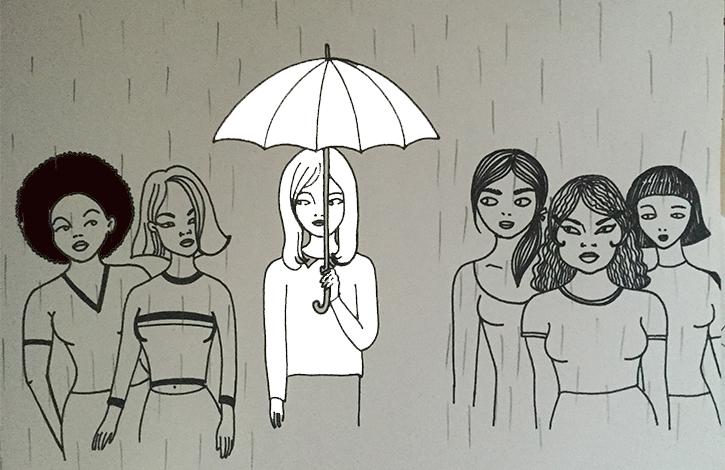On Nov 9, most Wellesley students witnessed the failure of the U.S. to elect the first female president. They saw the majority of electoral college votes go to elect a man with a heavy history of sexism and misogyny. By 51 electoral votes, Secretary Clinton was prevented from shattering the glass ceiling as many of us had expected, and a surprisingly 42 percent of women had contributed to her defeat.
Many people can agree with me that this election was not about political expertise or leadership ability, as we noticed during the presidential debates. Apparently, it did not matter who was going to serve the country better or who had the values and necessary experience. Many polls predicted the overwhelming support of white males for Trump, but Clinton, overall, had a better chances of winning. However, Clinton’s victory could have been secured had more white women voted against sexism and misogyny.
During his campaign, Clinton’s opponent was very successful at convincing the majority of white men to vote for him. He promised them new immigration rules that would ensure opportunities for American workers first and reforms that would decrease the immigration rate. Since the beginning of his campaign, it was very clear that his policy would target white people and that he was eager to ignore minorities in order to protect the personal interests of this particular group. In contrast, Secretary Clinton focused on creating a more inclusive environment with equal opportunities for all. However, she had difficulties convincing this part of the population that was dissatisfied and disappointed by the eight years of Obama’s presidency. Therefore, white men had to choose between increasing their privilege and creating a more inclusive America, and 63 percent of white men unsurprisingly voted for the Republican.
On the other side, 53 percent of white women voted for a man who has a significant number of sexual assault allegations. President-elect Trump bragged about physically harassing and women in a video uncovered by The Washington Post. Like those found in USA Today, many polls had predicted that women would not vote for Trump. However, his history of misogyny was not a deal breaker for many white women. On the other hand, 93 percent of black women voted for Clinton, clearly delineating a moral and racial difference in feminism.
Before this election, it has never been clearer in the history of feminism that some feminist causes are more appealing to one group of women than another. In her book “Killing the Black Body,” Dorothy Roberts offers a deep analysis of violations of black women’s reproductive rights from sexual assault to objectification, and how it has rarely been part of the white feminist agenda. The results from last Tuesday’s elections testify that Trump’s disparaging and discourteous attitude towards women did not influence the choice of most white women, but instead black women were more concerned by the threats because of their vulnerability. White feminism has failed women of color in this election by being complacent with issues that should concern us all. It arguably has also failed to uphold human decency and respect in the U.S.
Certainly, Clinton’s defeat came as a surprise to many of her supporters, the Wellesley community in particular. While many people argue that the reopening of Clinton’s email case undoubtedly influenced undecided voters, I believe that no scenario could have helped Clinton win without the support of most white women. Until this election, the idea that half of the female population could actually tolerate sexual assault and misogyny was inconceivable. However, statistics have proven this assumption to be false. As a young girl who grew up in a continent that western countries have consistently criticized for not respecting women’s rights, I am disappointed by the silence of white women in this election and can only hope that this hypocrisy will serve as a lesson to all the feminists in this nation.




